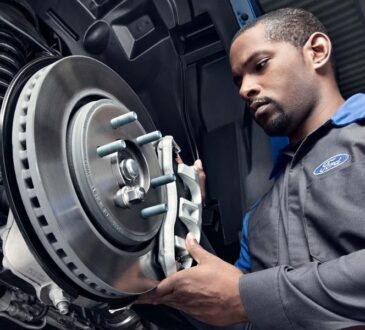
Buying your first used motorcycle is an exciting milestone, marking the start of new adventures on two wheels. Whether you’re a seasoned rider or a newcomer to the world of motorcycles, purchasing a used bike offers a fantastic opportunity to get a great deal on a machine that suits your needs and budget. However, buying a used motorcycle also comes with its own set of challenges and considerations. To help you make an informed decision and find the perfect bike, here are some top tips for first-time used motorcycle buyers.
1. Determine Your Riding Needs and Budget
Before you start shopping for a used motorcycle, it’s important to clearly define your riding needs and set a budget. Understanding what you want from your motorcycle and how much you’re willing to spend will help you narrow down your options and avoid making impulsive decisions.
Consider Your Riding Style
Think about how you plan to use your motorcycle. Are you looking for a bike for daily commuting, weekend cruising, long-distance touring, or off-road adventures? Different motorcycles are designed for different purposes, so it’s essential to choose a bike that aligns with your intended use.
- Commuting: If you’re planning to use your motorcycle for daily commuting, you might want to consider a lightweight, fuel-efficient bike with comfortable seating and good maneuverability.
- Cruising: For weekend cruising, a cruiser or a standard bike with a relaxed riding position might be ideal. These bikes are designed for comfort and style, making them perfect for leisurely rides.
- Touring: If long-distance travel is your goal, a touring motorcycle with plenty of storage, advanced rider aids, and a comfortable seat will make your journeys more enjoyable.
- Sport Riding: If you’re into sport riding, a sportbike or a naked bike with a powerful engine and sharp handling might be what you’re looking for. These bikes are built for speed and agility.
Set a Realistic Budget
Once you’ve determined the type of bike that suits your needs, set a budget that includes not just the purchase price of the motorcycle, but also additional costs such as insurance, gear, maintenance, and potential upgrades.
- Purchase Price: Research the average prices for the type of motorcycle you’re interested in to get a sense of what you should expect to pay. Be sure to leave some wiggle room in your budget for taxes, registration, and other fees.
- Insurance: Motorcycle insurance rates vary depending on the bike’s make, model, and your riding experience. Get insurance quotes for the bikes you’re considering to ensure they fit within your budget.
- Maintenance: Older or high-mileage motorcycles may require more frequent maintenance and repairs. Consider setting aside a portion of your budget for maintenance costs, especially if you’re buying a bike that’s more than a few years old.
2. Research the Motorcycle’s History
When buying a used motorcycle, it’s crucial to research the bike’s history to ensure you’re getting a reliable machine. A thorough background check can reveal important information about the motorcycle’s past, including any accidents, modifications, or major repairs.
Check the VIN
The Vehicle Identification Number (VIN) is a unique code assigned to every motorcycle and can provide valuable information about the bike’s history. Use the VIN to run a history report through services like CARFAX or CycleVIN, which can reveal details such as:
- Accident History: Find out if the motorcycle has been involved in any accidents and whether it was declared a total loss by an insurance company.
- Title Status: Ensure that the motorcycle has a clean title, meaning it hasn’t been salvaged or rebuilt. A clean title is crucial for future resale value and insurability.
- Ownership History: See how many previous owners the bike has had and whether it was used for personal use, as a rental, or for racing.
Ask for Maintenance Records
Maintenance records provide insight into how well the motorcycle has been cared for. A bike with a documented maintenance history is more likely to be in good condition and less prone to future issues.
- Regular Maintenance: Look for records of regular oil changes, tire replacements, brake servicing, and other routine maintenance tasks. Consistent maintenance is a good indicator that the bike has been well looked after.
- Major Repairs: Check for any major repairs or part replacements. While some repairs are normal for older bikes, frequent or extensive repairs could indicate underlying problems.
Investigate Any Modifications
Many motorcycle owners make aftermarket modifications to their bikes, such as installing custom exhausts, performance parts, or cosmetic upgrades. While some modifications can enhance the bike’s performance and value, others may compromise its reliability or legality.
- Quality of Modifications: Ensure that any modifications were done using high-quality parts and were installed by a reputable mechanic. Poorly executed modifications can lead to mechanical issues and safety concerns.
- Legal Compliance: Verify that any modifications comply with local laws and regulations, particularly regarding exhaust noise levels, emissions, and lighting.
3. Conduct a Thorough Inspection
A physical inspection of the used motorcycle is essential to identify any potential issues that may not be apparent in the bike’s history report. If you’re not confident in your mechanical skills, consider bringing a knowledgeable friend or hiring a professional mechanic to assist with the inspection.
Exterior Condition
Start by inspecting the exterior of the motorcycle for any signs of damage, wear, or neglect.
- Frame and Bodywork: Check the frame for any cracks, bends, or signs of previous repairs. Inspect the bodywork for scratches, dents, or rust, which could indicate a history of neglect or an accident.
- Paint and Finish: Look for any inconsistencies in the paint or finish, such as mismatched colors or peeling. These could be signs of a previous repair or repaint job.
- Lights and Indicators: Test all lights, indicators, and electrical components to ensure they’re functioning correctly. Faulty lights could be a sign of electrical issues.
Mechanical Components
Next, focus on the motorcycle’s mechanical components to assess its overall condition and performance.
- Engine: Start the engine and listen for any unusual noises, such as knocking, ticking, or excessive vibration. The engine should start easily, idle smoothly, and respond well to throttle inputs.
- Transmission: Test the transmission by shifting through all the gears while riding. The shifts should be smooth and precise, without any grinding or slipping.
- Brakes: Inspect the brake pads, rotors, and calipers for wear and tear. Test the brakes to ensure they provide strong, responsive stopping power without any squeaking or pulsating.
- Suspension: Check the front and rear suspension for leaks, damage, or excessive play. The suspension should provide a smooth, controlled ride without any bouncing or bottoming out.
Tires and Wheels
The condition of the tires and wheels is crucial for safety and ride quality.
- Tire Tread: Inspect the tires for adequate tread depth and even wear. Tires with uneven wear may indicate alignment issues or improper tire pressure.
- Tire Age: Check the date code on the sidewall of the tires to determine their age. Tires older than five years may need to be replaced, even if they have plenty of tread left.
- Wheels: Inspect the wheels for any dents, cracks, or bends. Damaged wheels can affect the bike’s handling and may need to be replaced.
4. Test Ride the Motorcycle
A test ride is an essential step in the buying process, as it allows you to experience the motorcycle’s performance, handling, and comfort firsthand. During the test ride, pay attention to the following:
Comfort and Ergonomics
Evaluate how comfortable the motorcycle feels and whether the riding position suits your body type and riding style.
- Seating Position: Ensure that the seat height, handlebar reach, and footpeg placement provide a comfortable and natural riding position. You should feel in control of the bike without straining your back, arms, or legs.
- Riding Comfort: Test the bike’s suspension to see how it handles bumps and rough roads. A well-tuned suspension should provide a smooth, comfortable ride without excessive harshness.
Performance and Handling
Test the motorcycle’s acceleration, braking, and handling to ensure it meets your performance expectations.
- Engine Power: Assess the bike’s power delivery and throttle response. The engine should feel strong and responsive, without any hesitation or surging.
- Braking: Test the brakes at various speeds to ensure they provide strong, controlled stopping power. The brake lever and pedal should feel firm and responsive.
- Handling: Evaluate the bike’s handling, particularly when cornering and maneuvering at low speeds. The motorcycle should feel stable, predictable, and easy to control.
5. Negotiate the Price and Complete the Purchase
Once you’ve found the perfect used motorcycle and completed your inspections and test ride, it’s time to negotiate the price and finalize the purchase.
Negotiate Fairly
Use your research and the results of your inspection to negotiate a fair price for the motorcycle. Be respectful but firm in your negotiations, and be prepared to walk away if the seller is unwilling to budge on an unrealistic price.
Verify Ownership and Paperwork
Before completing the purchase, verify that the seller has a clear title to the motorcycle and that all necessary paperwork is in order.
- Title Transfer: Ensure that the title is signed over to you and that the VIN on the title matches the VIN on the motorcycle.
- Bill of Sale: Complete a bill of sale that includes the purchase price, the bike’s VIN, and both the buyer’s and seller’s information. This document serves as proof of the transaction.
Plan for Insurance and Registration
After purchasing the motorcycle, you’ll need to arrange for insurance and register the bike in your name. Contact your insurance provider to set up coverage, and visit your local DMV to complete the registration process.
Conclusion
Buying your first used motorcycle can be an exciting and rewarding experience, but it’s important to approach the process with careful consideration and thorough research. By following these top tips, you can ensure that you find a reliable, high-quality bike that suits your needs and budget. Whether you’re cruising down the highway or carving through twisty backroads, you’ll be ready to enjoy the open road with confidence on your new-to-you motorcycle.




